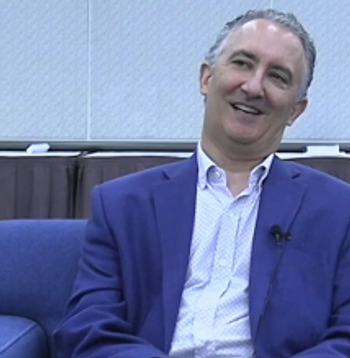
- Psychiatric Times Vol 26 No 8
- Volume 26
- Issue 8
Setting the Record Straight: A Response to Frances Commentary on DSM-V
The commentary “A Warning Sign on the Road to DSM-5: Beware of its Unintended Consequences” by Allen Frances, M.D., submitted to Psychiatric Times contains factual errors and assumptions about the development of DSM-V that cannot go unchallenged. Frances now joins a group of individuals, many involved in development of previous editions of DSM, including Dr. Robert Spitzer, who repeat the same accusations about DSM-V with disregard for the facts.
The commentary “
The facts are:
The process for developing DSM-V has been the most open and inclusive ever. The process began with a planning session that led to 13 NIH-supported international research conferences and a series of monographs. These conferences included more than 400 scientists, clinicians and others in the field. The DSM-V Task Force and Work Groups include more than 150 experts in various specialties and sub-specialties from 16 countries, including both scientists and clinicians. Over 200 advisors have thus far been asked to share expertise with DSM Work Groups. The DSM-V Task Force established a Web site,
“Confidentiality agreements” Frances and his colleagues cite as evidence of secrecy around DSM-V are in reality legal documents designed to protect intellectual property. Attorneys for the APA worked with the DSM-V Task Force and Work Groups to develop these agreements to protect the work product of these volunteers. As a matter of practice, these agreements have clearly not inhibited free discussion. Task force and work group members have presented and participated in open discussions at psychiatric, subspecialty, and major medical meetings around the world. They have also published in peer-reviewed journals and trade publications and have given countless interviews to the medical and mainstream press about the DSM-V process.
The DSM-V development process is scientific, and it contains the same elements as the DSM-IV process described by Dr. Frances, including literature reviews, secondary data analyses, and field trials. This is in addition to the comprehensive pre-revision scientific review conferences. A key difference in the DSM-V process versus the DSM-IV process is that our focus is not on keeping things as they are but instead on determining what is working with the current DSM, what is not working, and determining how to correct what is not working. The DSM-V revision groups are looking for ways, for example, to better deal with high levels of co-occurring disorders and Not Otherwise Specified (NOS) diagnoses, to better specify treatment targets for routine clinical practice as well as for treatment development, and to dispense with imprecise criteria and unused/poorly used features. Although the DSM-V work groups were freed from the constraints inherent in DSM-IV’s conservative process, three principles were clearly stated to them from the beginning: the highest priority in modifying DSM-V should be optimizing clinical utility, recommendations should be guided by research evidence, and continuity with previous editions should be maintained.
As documented in the recent American Journal of Psychiatry (AJP) article (Regier, et al., 2009), the use of dimensional assessments to reconceptualize psychopathology represents the most practical and evidence-based way of moving our field forward. Recent studies underscore the readiness of clinicians in both primary care and specialty mental health settings to adopt dimensional instruments on a routine basis (Duffy et al., 2008, Trivedi et al., 2006). Interestingly, Dr. Robert Spitzer’s work in developing such measures as the PHQ-9, the GAD-7, and the PHQ-15 actually bolster the support for a dimensional approach to diagnosis, as noted in the above AJP article and in an article he co-authored (Lwe et al., 2008). Such assessments will inform a measurement-based approach to patient care that will improve clinician tracking of symptom threshold, severity, and treatment outcomes.
A document detailing the issues that the work groups have been examining in relation to the DSM-V field trials will be produced; however, given advances in communications technology, it may not be in book form and may not be called an “options book.” In addition, draft criteria will be released with sufficient time for review. Recognizing changes in technology and the need for continued updates and revisions of DSM-V, we are setting up a process that will allow the new DSM to change with new developments, rather than being reified for a decade or more. New publishing technologies, not even imagined in the early 1990s, will help make this possible.
The DSM-III categorical diagnoses with operational criteria were a major advance for our field, but they are now holding us back because the system has not kept up with current thinking. Clinicians complain that the current DSM-IV system poorly reflects the clinical realities of their patients. Researchers are skeptical that the existing DSM categories represent a valid basis for scientific investigations, and accumulating evidence supports this skepticism. Science has advanced, treatments have advanced, and clinical practice has advanced since Dr. Frances’ work on DSM-IV. The DSM will become irrelevant if it does not change to reflect these advances.
Finally, Dr. Frances opened his commentary with the statement, “We should begin with full disclosure.” It is unfortunate that Dr. Frances failed to take this statement to heart when he did not disclose his continued financial interests in several publications based on DSM-IV. Only with this information could the reader make a full assessment of his critiques of a new and different DSM-V. Both Dr. Frances and Dr. Spitzer have more than a personal “pride of authorship” interest in preserving the DSM-IV and its related case book and study products. Both continue to receive royalties on DSM-IV associated products. The fact that Dr. Frances was informed at the APA Annual Meeting last month that subsequent editions of his DSM-IV associated products would cease when the new edition is finalized, should be considered when evaluating his critique and its timing.
References:
References
Duffy FF, Chung H, Trivedi M, Rae DS, Regier DA, Katzelnick DJ. Systematic Use of Patient-Rated Depression Severity Monitoring: Is It Helpful and Feasible in Clinical Psychiatry? Psychiatric Services 2008; 59:1148-1154.
Löwe B, Spitzer RL, Williams JBW, Mussell M, Schellberg D, Kroenke K: Depression, anxiety and somatization in primary care: syndrome overlap and functional impairment. Gen Hosp Psychiatry 2008; 30:191–199.
Trivedi MH, Rush JA, Wisniewski SR, Nierenberg AA, Warden D, Ritz L, Norquist G, et al. Evaluation of outcomes with citalopram for depression using measurement-based care in STAR*D: Implications for clinical practice. Am J Psychiatry 2006; 163:28-40.
Regier DA, Narrow WE, Kuhl EA, Kupfer DJ. The conceptual development of DSM-V. Am J Psychiatry 2009; 166:645-650.
Articles in this issue
over 16 years ago
Reality-Checking: Case in Pointover 16 years ago
A Response to the Charge of Financial Motivationover 16 years ago
From Chaos to Consilience: Part IIIover 16 years ago
Marketing Off-Label Uses: Shady Practices Within a Gray Marketover 16 years ago
The Great DSM Debateover 16 years ago
Borderline Personality Disorder and Resistance to Treatmentover 16 years ago
Chronic Eating Disordersover 16 years ago
Introduction Underlying Causes and ImplicationsNewsletter
Receive trusted psychiatric news, expert analysis, and clinical insights — subscribe today to support your practice and your patients.

















